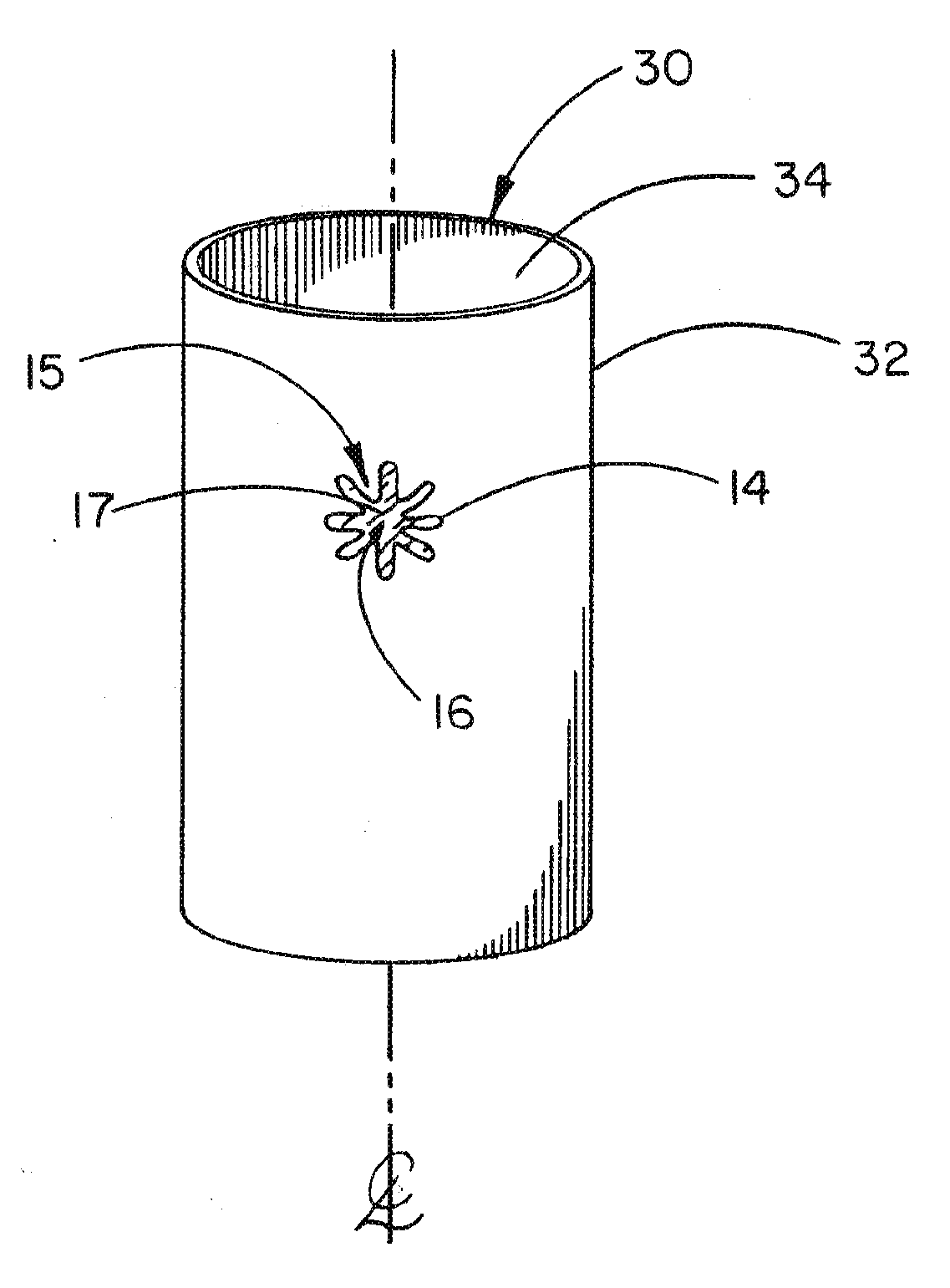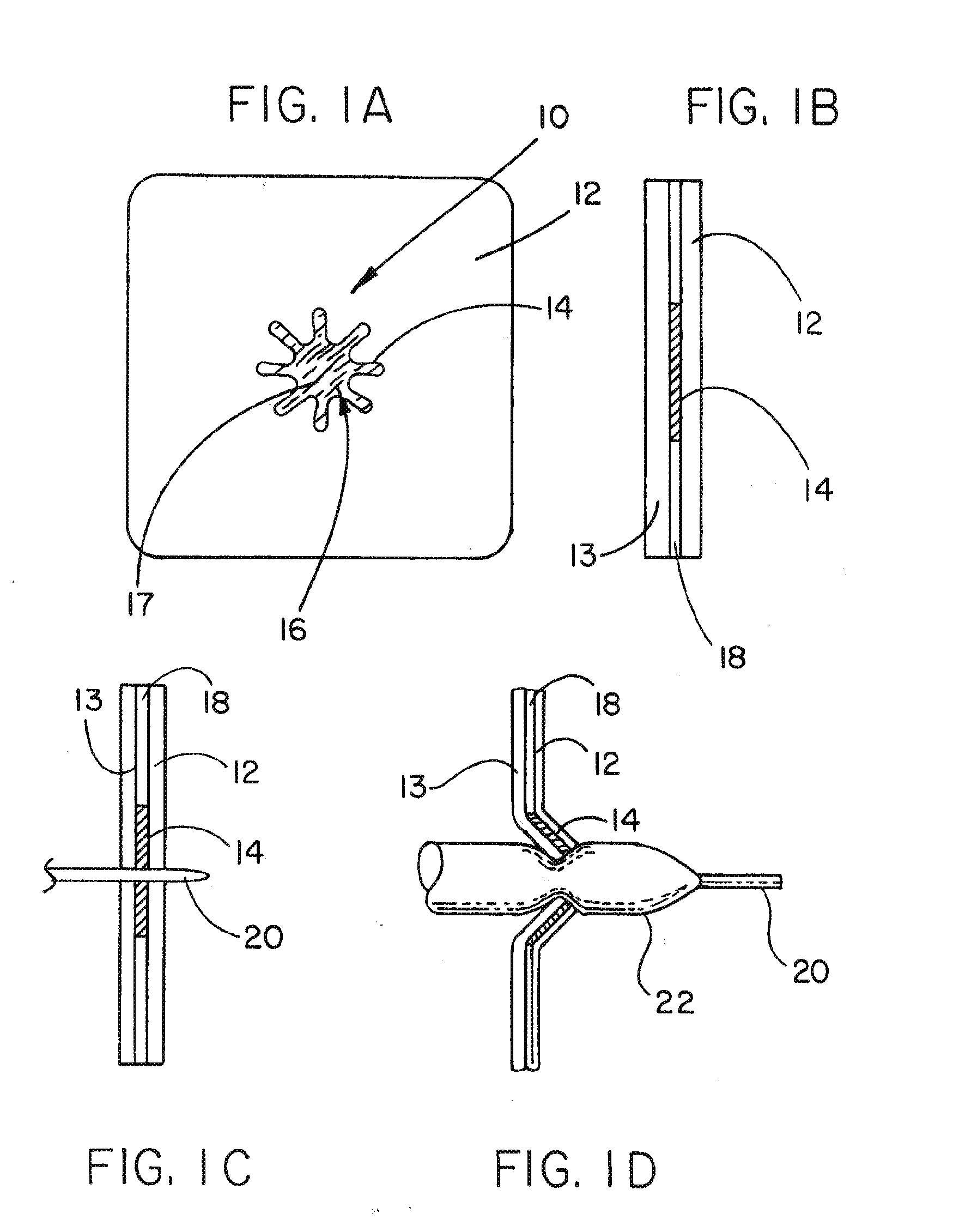Medical device ameneable to fenestration
a technology of medical devices and fenestration, applied in the field of medical devices, can solve the problems of high morbidity and mortality rates, inapplicability of technology, and insufficient proximal vessel length to achieve adequate fixation
- Summary
- Abstract
- Description
- Claims
- Application Information
AI Technical Summary
Benefits of technology
Problems solved by technology
Method used
Image
Examples
example 1
[0072]A planar sheet embodiment of the present invention, approximately 8.3 cm (3.25″) by 13.3 cm (5.25″), was constructed as follows. A first layer of an expanded polytetrafluoroethylene (ePTFE) sheet material having a thickness of about 0.4 mm was obtained from the Medical Products Division of W.L. Gore & Associates, Inc., Flagstaff, Ariz. under the tradename GORE-TEX® Cardiovascular Patch as part number 1800610004 (FIG. 12, part A1).
[0073]A second layer of a fluoro-elastomeric sheet material composed of a thermoplastic copolymer of tetrafluoroethylene (TFE) and perfluoro(methyl vinyl ether) (PMVE) was constructed by compression molding the crumb form of the copolymer at a temperature of about 250° C. to form a sheet about 0.2 mm (0.008″) in thickness (FIG. 12, part A3). The resulting material had the attributes described in TABLE 1 below.
[0074]A third layer of sheet material (FIG. 12, part A4) is composed of ePTFE made according to U.S. Pat. No. 4,482,516, issued to Gore. The she...
example 2
[0078]This example describes a tubular vascular graft having the article of Example 1 incorporated into the wall of the tubular graft. The article of Example 1 was trimmed and sewn into a corresponding hole cut through the wall of an ePTFE vascular graft. The ePTFE vascular graft was a GORE-TEX® Vascular Graft available from the Medical Products Division of W.L. Gore & Associates, Inc., Flagstaff, Ariz. as part number SA1604. The article from Example 1 was sewn into the corresponding hole of the tubular construct with an ePTFE suture material obtained from Medical Products Division of W.L. Gore & Associates, Inc. Flagstaff, Ariz. under the tradename GORE-TEX® Suture as part number CV-5. The resulting article is shown in FIG. 3B.
[0079]Accurate and illustrative examples of the invention have been described in detail however, it is readily foreseen that numerous modifications may be made to these examples
PUM
 Login to View More
Login to View More Abstract
Description
Claims
Application Information
 Login to View More
Login to View More - R&D
- Intellectual Property
- Life Sciences
- Materials
- Tech Scout
- Unparalleled Data Quality
- Higher Quality Content
- 60% Fewer Hallucinations
Browse by: Latest US Patents, China's latest patents, Technical Efficacy Thesaurus, Application Domain, Technology Topic, Popular Technical Reports.
© 2025 PatSnap. All rights reserved.Legal|Privacy policy|Modern Slavery Act Transparency Statement|Sitemap|About US| Contact US: help@patsnap.com



